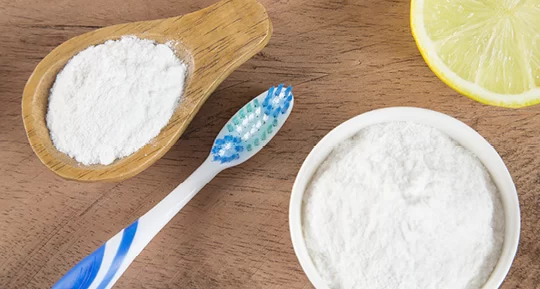
Best Natural Ingredients for Homemade Toothpaste – A DIY Guide
1. Why Choose Natural Toothpaste?
With growing concerns about the harmful chemicals in commercial toothpaste, many people are turning to natural alternatives. Homemade toothpaste allows you to control the ingredients, avoid artificial additives, and create a product tailored to your dental needs.
2. Top Natural Ingredients for Homemade Toothpaste
2.1 Baking Soda for Cleaning
Baking soda is a popular base for DIY toothpaste. It effectively removes plaque and neutralizes acids that cause cavities. Additionally, its mild abrasiveness helps whiten teeth naturally without damaging enamel.
2.2 Coconut Oil for Antibacterial Benefits
Coconut oil is well-known for its antibacterial and antifungal properties. It helps reduce harmful bacteria in the mouth, supports gum health, and can even freshen breath.
2.3 Xylitol for Natural Sweetness and Cavity Prevention
Xylitol is a natural sweetener that not only enhances the taste of homemade toothpaste but also helps prevent cavities by reducing bacteria that cause tooth decay.
2.4 Calcium Carbonate for Mineral Support
Calcium carbonate is a natural polishing agent that strengthens enamel and gently removes stains. It is often included in DIY toothpaste to provide additional remineralization benefits.
2.5 Essential Oils for Flavor and Antibacterial Properties
Essential oils like peppermint, tea tree, or clove oil not only add a refreshing flavor but also offer antibacterial properties to promote oral hygiene.
2.6 Activated Charcoal for Whitening
Activated charcoal has become a trendy natural whitening agent. It helps remove stains and toxins from the mouth, although it should be used sparingly to avoid excessive abrasiveness.
3. Step-by-Step Guide to Making Your Own Natural Toothpaste
3.1 Ingredients You Will Need
- 2 tbsp baking soda
- 2 tbsp coconut oil
- 1 tbsp xylitol
- 1 tbsp calcium carbonate
- 5 drops peppermint essential oil
- (Optional) 1 tsp activated charcoal
3.2 Mixing Instructions
- Melt the coconut oil slightly if solid.
- Mix all ingredients in a small bowl until a smooth paste forms.
- Store in a glass jar or reusable container.
- Use a small spoon or spatula to apply the toothpaste to your toothbrush.
3.3 How to Use and Store
Use your DIY toothpaste as you would any regular toothpaste. Store it in a cool, dry place. If it hardens, simply stir before use.
4. Benefits and Potential Risks of Homemade Toothpaste
4.1 Benefits of Natural Toothpaste
- Free from artificial chemicals and preservatives.
- Customizable to personal preferences and dental needs.
- Eco-friendly with zero waste packaging.
- Cost-effective compared to commercial organic brands.
4.2 Potential Risks and Precautions
While natural toothpaste is generally safe, some ingredients may be too abrasive if overused. Additionally, fluoride-free formulas may not offer the same level of cavity protection, so consult your dentist before switching completely.
5. Where to Buy Quality Natural Ingredients
If you prefer not to make your own toothpaste, there are various high-quality organic toothpaste brands available. You can also find natural toothpaste ingredients online or at health stores.
6. Final Thoughts on Natural Toothpaste
Making your own natural toothpaste is an excellent way to take control of your oral health while avoiding harmful chemicals. Whether you prefer a simple baking soda mix or a more elaborate recipe with essential oils and charcoal, experimenting with DIY toothpaste can be a fun and rewarding experience.







 Willamette Dental Group - Portland - Jefferson4.0 (151 review)
Willamette Dental Group - Portland - Jefferson4.0 (151 review) Rockland Endodontics4.0 (42 review)
Rockland Endodontics4.0 (42 review) Millennium Dental Arts5.0 (235 review)
Millennium Dental Arts5.0 (235 review) Equitas Health Short North Medical Center3.0 (96 review)
Equitas Health Short North Medical Center3.0 (96 review) Paradise Dental Practice5.0 (66 review)
Paradise Dental Practice5.0 (66 review) Smile Scarsdale Pediatric Dentistry & Family Orthodontics4.0 (480 review)
Smile Scarsdale Pediatric Dentistry & Family Orthodontics4.0 (480 review) The Importance of Oral Health Education During Pregnancy for a Healthy Pregnancy
The Importance of Oral Health Education During Pregnancy for a Healthy Pregnancy Best Tips for Brushing Your Teeth Properly for Healthy Gums: Essential Techniques for Oral Health
Best Tips for Brushing Your Teeth Properly for Healthy Gums: Essential Techniques for Oral Health Why Skipping Dental Checkups Can Lead to Bigger Oral Health Problems
Why Skipping Dental Checkups Can Lead to Bigger Oral Health Problems Advantages of Porcelain Dental Restorations
Advantages of Porcelain Dental Restorations How Can Diabetes Cause Tooth and Gum Problems? Preventing and Managing Oral Health Issues
How Can Diabetes Cause Tooth and Gum Problems? Preventing and Managing Oral Health Issues Healthy Habits for Promoting Good Oral Health and Hygiene: Tips for a Healthy Smile
Healthy Habits for Promoting Good Oral Health and Hygiene: Tips for a Healthy Smile